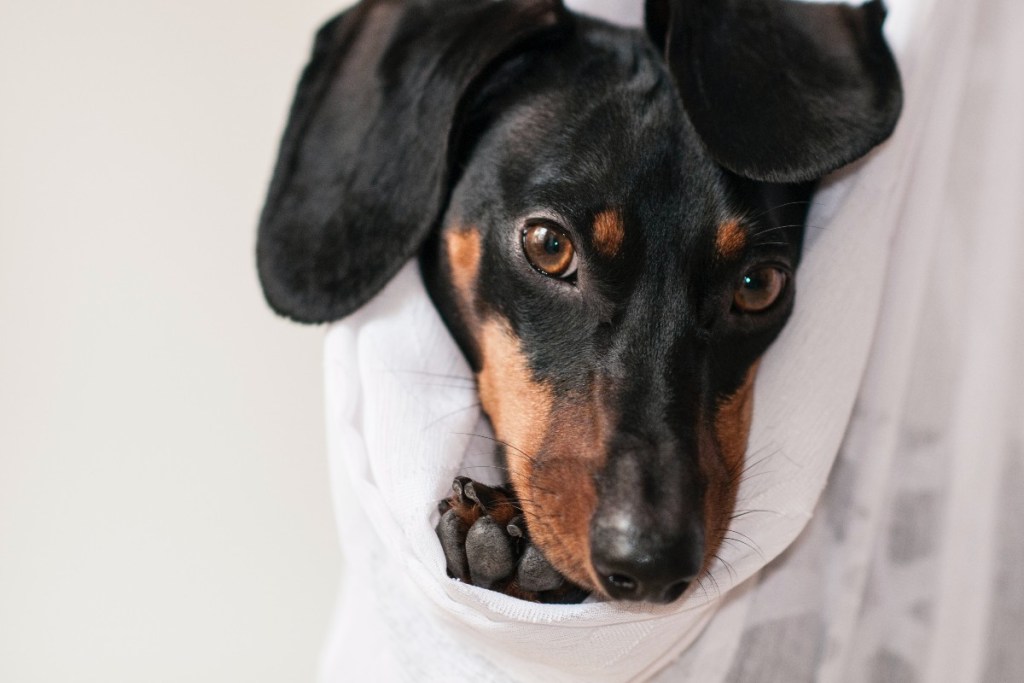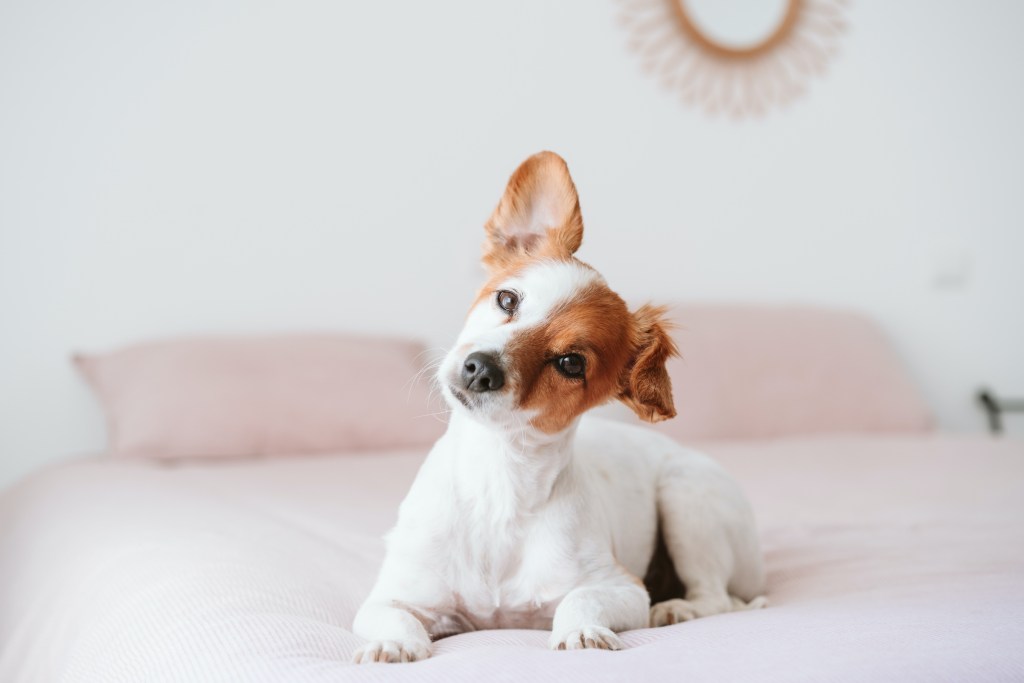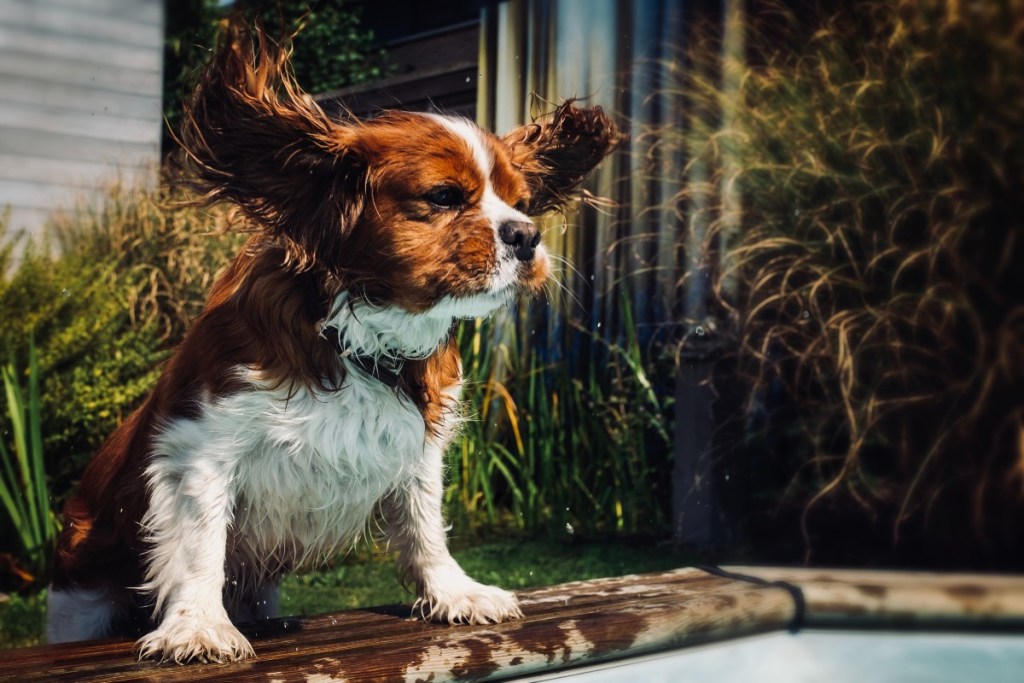Your pup’s ears may be one of your favorite parts about them. They perk up when you walk into the room, and they somehow always seem to hear you open your refrigerator no matter how quiet you try to remain. Knowing how to clean a dog’s ears should be required learning for pet parents.
Yet, often, it’s not. When we take home our pets, we sometimes have pamphlets on feeding, toys, and vaccinations. Don’t get us wrong. Those are all important things to know. However, cleaning a dog’s ears is a way to keep your pup healthy, happy, and irritant-free.
Since you may not have gone home with an instruction manual on how to clean a dog’s ears, we dug up some information for you. Here’s what to know about ear cleaning in dogs.

Why it’s important to clean your dog’s ears
Cleaning your dog’s ears is a way to reduce the buildup of dirt, yeast, and other bacteria in your dog’s ears. These materials can easily get caught in a dog’s ear canal because it’s horizontal, and only a good cleaning, preferably with an ear cleaner, can get it out. If you don’t nix the buildup, it can cause a pup’s ear to itch and even create an infection.

How often should you clean your dog’s ears?
This answer depends on your dog, their lifestyle, and their overall ear health. Generally, cleaning the ears once per month is fine. However, pups with low-hanging, floppy ears, like bassett hounds, beagles, and cocker spaniels, are more prone to ear infections and typically require more frequent cleanings.
Ear cleaning in dogs is also essential after the pet comes in contact with water, whether it’s for a bath or a fun swim. Yeast thrives in damp ears. Your poor pup can develop an infection if it builds up and isn’t removed.
Keeping tabs on your pet’s unique ears can help you come up with a cadence for cleanings. If your dog displays any of these behaviors, it may be time for an ear cleaning:
- Scratching more than usual
- Redness or inflammation
- Fleas or ear mites
- Odor
It’s also possible to over-clean a dog’s ears and irritate them in the process, so talk to your vet if you’re unsure how often to tackle this task.

How to clean a dog's ears
Here are the simple steps for cleaning your dog's ears.
Step 1: Call your dog over and give them a treat.
Step 2: Have all your supplies so you can work efficiently.
Step 3: Sit down with your pup in front of you and between your legs.
Step 4: Flip over the ear so the flap is right side up and the ear drum is vertical.
Step 5: Squeeze the appropriate amount of dog ear cleaner in your pup’s ear. (Your vet can advise on the right amount.)
Step 6: Massage the base of the ear gently for about 30 seconds. The solution will squish around. You can turn this into a fun game by talking to your pet.
Step 7: As you hold the ear flap up, gently wipe away any buildup from the inner part of the flap and visible ear canal with the cotton ball or gauze.
Step 8: Give your dog a treat and tons of praise.
Step 9: Repeat on the opposite side.
Not all dogs like their ears cleaned, but it’s an important process. Doting on them with treats and praise can help ease the process. Also, always clean your dog’s ears when they are calm. Doing it in the same spot every time can prepare your dog for what’s to come by providing a sense of familiarity. The frequency of ear cleanings depends on your pooch. Some floppy-eared pets need more frequent cleanings, while others can get away with once per month and after going in the water. Your vet can help you figure out the best frequency and ear solution for your pet and troubleshoot with you if the pup consistently resists ear cleanings.
Editors' Recommendations
- Are ‘dog years’ really 7 human years? How to calculate your dog’s age
- How to tell if your older dog’s health decline means the end is near
- Xylitol is dangerous for dogs: 10 surprising products that contain it as a hidden ingredient
- How much water should your puppy drink in a day? Here are the factors to consider
- This is the ultimate week-by-week puppy training schedule every new pet parent needs




